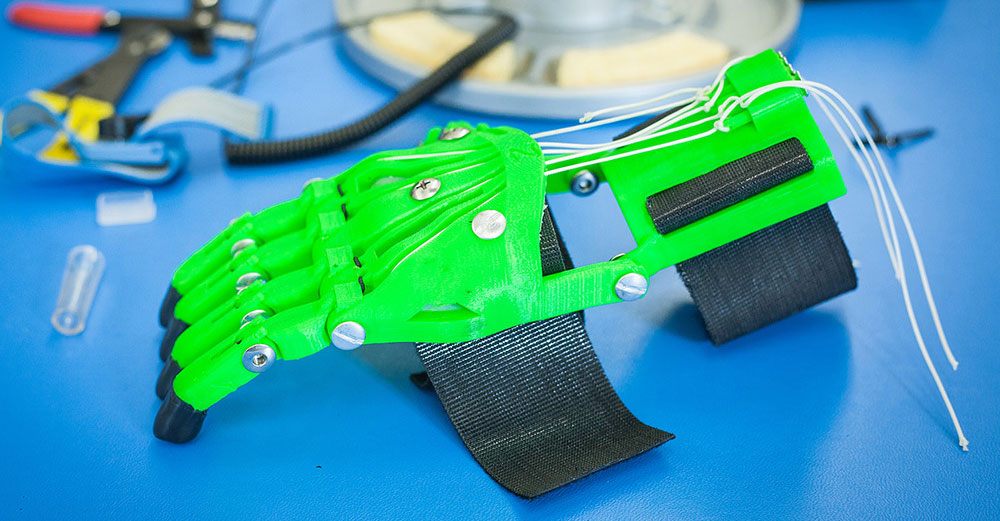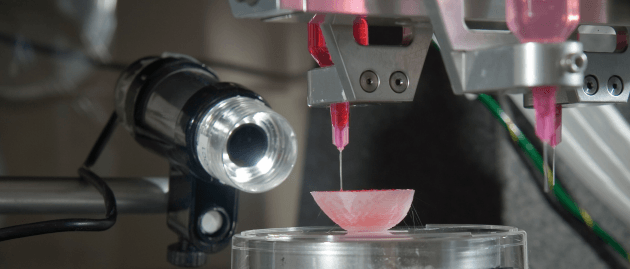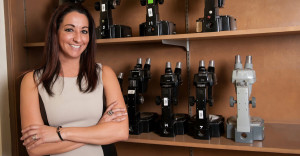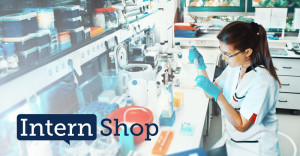
As scientists and engineers learn how to 3-D print with materials like aircraft-grade plastic, metal, even living tissue, the process is having a profound impact on both the way we manufacture the objects we already have and the way we think about objects we have yet to invent.
In fact, many are calling this the “second Industrial Revolution,” and it’s creating a need for engineers, designers and architects who’ve been trained in additive manufacturing—the industrial version of 3-D printing. It’s also creating a need for schools that can educate this new generation of professionals.
SUNY New Paltz met this challenge head-on when it founded the Hudson Valley Advanced Manufacturing Center (HVAMC), home to the college’s 3-D printing program, in 2013. The HVAMC was given a two-pronged mission: to educate, and to provide 3-D printing and design services to Hudson Valley businesses with high-end machines like the Stratasys Fortus 400MC and the 3-D Systems PROJET 660.
In February of 2014, the HVAMC’s educational arm got a huge boost when it partnered with MakerBot, a leading manufacturer of 3-D desktop printers, to launch the world’s first MakerBot Innovation Center. Its 30 MakerBot Replicator 2s and 2Xs now comprise a standard feature in many students’ curricula, especially in art and those fulfilling the digital design and fabrication certificate program and the mechanical engineering major, two programs recently introduced at SUNY New Paltz.
But HVAMC Director Dan Freedman recognized another challenge to be met. About 50 percent of SUNY New Paltz graduates are transfers, many from five community colleges within easy commuting distance of the campus. SUNY New Paltz has a long history of working with these schools to ensure a smooth transfer of common core courses, and Freedman wanted to maintain that tradition vis-à-vis 3-D printing.
 This meant helping the community colleges incorporate 3-D printing as part of their curricula so that all students would have access to the same equipment. Using a portion of a $1 million grant awarded to the HVAMC by the Mid-Hudson Regional Economic Development Council in December 2013, SUNY New Paltz was able to provide the community colleges with printers, setup, and training by spring semester of 2015.
This meant helping the community colleges incorporate 3-D printing as part of their curricula so that all students would have access to the same equipment. Using a portion of a $1 million grant awarded to the HVAMC by the Mid-Hudson Regional Economic Development Council in December 2013, SUNY New Paltz was able to provide the community colleges with printers, setup, and training by spring semester of 2015.
Designing the (3-D) Future
SUNY Orange Engineering Department Chair John Wolbeck and his staff were so excited about bringing 3-D printing to the campus that they wrote and won an in-house grant enabling the department to supplement the HVAMC-supplied equipment with three small MakerBot replicators of their own. Says Wolbeck, “We’ve tied the printers into our engineering and architectural degrees, embedding them as part of the students’ required projects. Having just started to infuse it in the curriculum, we’re already seeing uses that we didn’t see before.”
SUNY Ulster has incorporated its four 3-D printers into the pre-engineering and industrial technology drafting and design programs. While half the students at SUNY Ulster go on to a four-year school—many to SUNY New Paltz—about half go directly into the workforce.
Salvatore Ligotino, who teaches computer-aided design, says the importance of the 3-D printers to his students, especially those who are there for job retraining, cannot be overstated. “All businesses today have a 3-D printer as a prototype machine, so the experience of understanding how to go from 3-D solid model software to printing is a necessity in today’s business world,” he says. “Everyone in the program for the industrial technology degree will be using those printers.”
Manufacturers and engineers aren’t the only ones who use 3-D printing, however. SUNY Sullivan is using the 3-D printers in its Computer Graphics-Graphic Design (AAS) program. “The 3-D printer gives them a handle on the differences between designing something that gets printed out and regular 3-D that’s just displayed on the screen,” explains Amber Melvin, coordinator at the Teaching and Technology Center, which helps implement technology in the teachers’ classrooms. This type of merging of art and technology can also be found at the SUNY New Paltz School of Performing Arts, where students in Art Education ran 3-D printing workshops for local K–12 teachers.
SUNY New Paltz hosted the Additive New York: ANYthing Conference showing how 3-D can be applied in the fields of industry, art, design, education, agriculture, medicine, and, of course, engineering. With world leaders in the field discussing materials, art, supply chain, design, and bioprinting, the HVAMC is riding the crest of the second Industrial Revolution, with community colleges right by their side.



